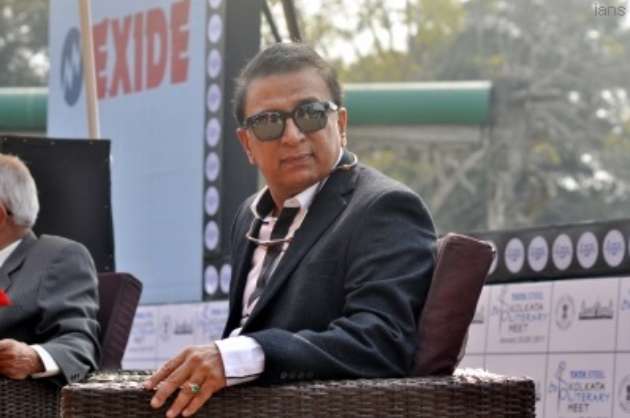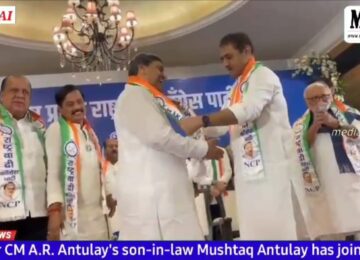Anupama Nair
www.mediaeyenews.com
Cricket is my favorite sport and for many in the British Commonwealth countries, as it was invented by the British, and became popular in the countries ruled by them. Test cricket is the form of the sport of cricket with the longest match duration i.e., five days, and is considered the toughest, and a true test of a batsman or bowler’s caliber for the entire five days. Each team plays two innings each, and the best wins… not always, you can drag a match to a boring draw too. 10th July is the birthday of one of the greatest opening batsmen of the game, Sunil Gavaskar. You need to remember, he played when there were lethal fast bowlers like Imran Khan, Dennis Lillee, Richard Hadlee, and the great West Indian bowlers.
Cricket was introduced to India by the British East India Company in the 18th Century. The first Cricket Club was established in 1792. In 1848, the Parsi community in Bombay, formed the Oriental Cricket Club, the first cricket club to be established by the Indians. After slow beginnings, the Europeans eventually invited the Parsi’s to play a match in 1877. By 1912, people of all religions of Bombay played a quadrangular tournament with the Europeans every year. In the early 1900s, some Indians went on to play for the England cricket team. Some of these, such as Maharaja Ranjit Singh and Duleep Singh was greatly appreciated by the British, and in 1911, an Indian team went on their first official tour of the British Isles, but only played English county teams and not in the England cricket team.
India's national cricket team did not play its first Test match until 25 June 1932 under Captain C.K Naidu at Lord’s becoming the sixth team to be granted test cricket status. India hosted its first Test series in the year 1933. England was the visiting team that played 2 Tests in Bombay and Calcutta. The visitors easily won the series 2–0. The Indian team continued to improve throughout the 1930s and 40s but did not achieve an international victory during this period. In the early 1940s, India didn't play any Test Cricket due to the War. The team's first series as an independent country was in late 1947 against Sir Donald Bradman's Invincible (a name given to the Australian team then). It was also the first Test series India played against a different opponent. Australia won the 5-match series 4–0, with Bradman tormenting the Indian bowling in his final Australian summer. India subsequently played their first Test series at home, but against the West Indies in 1948. West Indies won the 5-Test series 1–0. India recorded their first Test victory, in their 24th match, against England at Madras in 1952, which was a great achievement for a newly independent India.
Now let me take you to the 1970s when the wheel of fortune began to spin in India’s favor. Then emerged a handsome player with a perfect technique and enormous powers of concentration – you guessed correct, Sunil Manohar Gavaskar or Sunny Bhai as he is lovingly called. It is hard to visualize a more beautiful defense: virtually unbreachable, it made his wicket among the hardest to earn. He played with equal pleasure off both front and back feet, had an excellent judgment of the length and line of a ball, and was beautifully balanced. He had virtually every stroke in the book but traded flair for the solidity when his side needed more from him.
Gavaskar set many world records during his career i.e., for the most Test runs and most Test centuries scored by any batsman. He had the record of 34 Test centuries for almost twenty years before it was broken by “God of Cricket” Sachin Tendulkar in December 2005. He was the first batsman to score a century in both innings of the game, a record three times. He was the first Test batsman to score 10,000 Test runs in a career and today stands at number 12 on the group of 13 players with 10,000-plus Test runs. However, statistics alone don't reveal Gavaskar's true value to India. Indian cricket progressed when he started playing, and he taught his teammates the value of professionalism and taught them nothing was impossible if you persevere. The result was winning the prestigious World Cup in 1983, defeating the mighty West Indies when they had players like Greenidge, and Vivian Richards, The self-actualization of Indian cricket began under him.
He had a high average of 65.45 against fast bowling, and naturally, he played his best against the West Indies. He helped India to win against West Indies in 1971. There was even a calypso written for him, called “ Gavaskar calypso”. His's debut home Test was against England and India comfortably won the series. The most memorable tour was against Pakistan in Pakistan (1978-1979), though he played well, India lost the series. Pakistan's great Imran Khan once praised Gavaskar saying “the most compact batsman I've bowled to".
His first series as a captain was a West Indian visit to India for a six-test series, in which India won 1-0. However, he did not have an impressive record as a captain. He equaled the great Bradman’s record of scoring 29 Test centuries in Kanpur against the West Indies. It is said, the great Prime Minister Indira Gandhi called and congratulated him. In the same series, he went past Boycott’s record of 8114 test runs. What a memorable test series.
Gavaskar rounded out his international career with the 1987 World Cup. He scored 300 runs at an average of 50 at the tournament. In the league phase, he recorded his highest ODI score of 103* against New Zealand. In his last international innings, he could only score 4 runs. While Gavaskar could not be described as an attacking batsman, he could keep the scoreboard ticking with unique shots such as the "late flick". His focus on technical correctness over flair meant that his style of play was usually less suited to the shorter form of the game. He is now a commentator for International matches. I loved him as a batsman, commentator, and overall a great human being. Happy Birthday, Sunny Ji.





























Interesting information.
My late dad used to love him
A great player
May you live long.
great man.
Great human being.
Nice article.
Happy birthday Sunny ji
Nice article
Great batsmen and later commentaor.
Great batsmen and later commentaor.
Great batsmen and later commentaor.
My Dad was a great fan of his.
Sunny ji greatest of all times.
Happy birthday Sunny ji
Belated Happy birthday ji.
Belated Happy birthday Sunny ji.
Happy birthday Sunny ji
Happy belated Bday Sunny ji.
Happy belated birthday.
Happy belated birthday.
Happy birthday Sir
Happy birthday Sir
Happy Birthday Sunny Ji
Happy Birthday Sunny Ji
Happy Birthday Sunny Ji
My dad used to love the way he played.
My dad used to love the way he played.
Great player.
Happy birthday ji
One of the greatest player of the game
Happy birthday Sir
Happy birthday Sir
Great player.
Great player
Great player
Great player